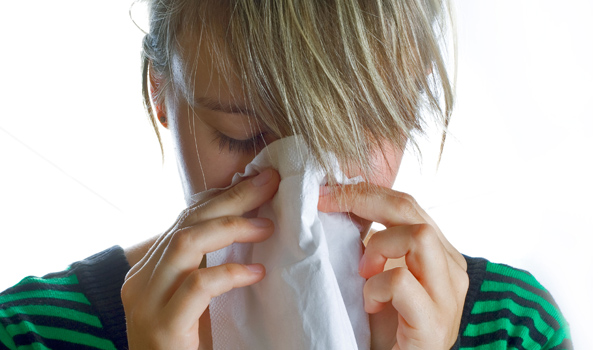Higher Humidity Lowers Flu Transmission

You may be safer from the flu in a humid room than in a dry one, according to a new study from researchers at the Centers for Disease Control and Prevention.
To simulate flu transmission in a health care setting, the researchers used "coughing" and "breathing" mannequins that were placed about 6 feet apart. Flu virus particles were released during a "cough," and devices throughout the room and near each "breathing" mannequin's mouth captured the particles. The particles were then collected and tested for their ability to infect human cells.
At humidity levels of 23 percent, 70 to 77 percent of the flu virus particles were still able to cause an infection an hour after the coughing simulation. But when humidity levels were raised to 43 percent, just 14 percent of the virus particles had the ability to infect. Most of the flu particles became inactive 15 minutes after they were released into the humid air. "The virus just falls apart," at high humidity levels, said study researcher John Noti, of the CDC's National Institute for Occupational Safety and Health.
High humidity was just as detrimental to small flu particles as large ones. That's important because small flu particles tend to hang in the air for a longer time, while large particles fall to the ground, Noti said.
Researchers already knew that humidity levels affect flu transmission . One reason flu transmission is thought to be lower during the summer months is because of the high humidity. But the new study more directly assessed how humidity levels might affect flu transmission in a health care setting, and also took into account flu particle size, said study researcher Donald Beezhold, also of the National Institute for Occupational Safety and Health.
During the summer months, it's pretty easy for indoor humidity levels to be up to 30 to 40 percent, Noti said. But during the winter months it's harder because indoor heating dries out the air, he said. [See Does A Warmer World Mean Less Flu?]
Raising the humidity level of a whole building could be a challenge. But the findings suggest that hospitals might consider raising humidity levels in certain rooms where there might be a high risk for flu transmission, or in rooms with patients who are particularly vulnerable to the flu, such as the intensive care unit (ICU), Noti said.
Get the world’s most fascinating discoveries delivered straight to your inbox.
However, humidity levels should not be too high, because mold starts to grow, Noti said.
The new study is published today (Feb. 27) in the journal PLOS ONE.
Pass it on: The flu virus is less infective at in rooms with higher humidity levels.
This story was provided by MyHealthNewsDaily, a sister site to LiveScience. Follow Rachael Rettner on Twitter @RachaelRettner, or MyHealthNewsDaily @MyHealth_MHND. We're also on Facebook & Google+.

Rachael is a Live Science contributor, and was a former channel editor and senior writer for Live Science between 2010 and 2022. She has a master's degree in journalism from New York University's Science, Health and Environmental Reporting Program. She also holds a B.S. in molecular biology and an M.S. in biology from the University of California, San Diego. Her work has appeared in Scienceline, The Washington Post and Scientific American.


